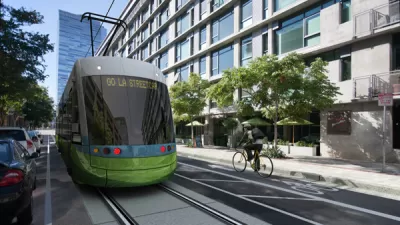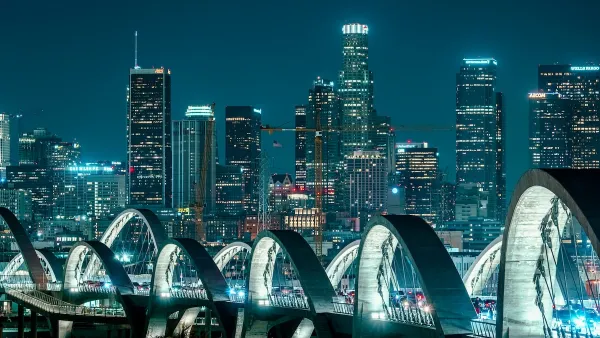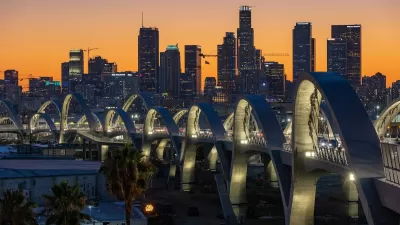The Los Angeles City Council voted to allow the Los Angeles Streetcar project to begin preliminary engineering.
The proposed Downtown LA Streetcar officially moved to its next phase this week, when the Los Angeles City Council's Transportation Committee voted 5-0 to allow Los Angeles Streetcar, Inc. (LASI) to contract out the preliminary engineering work for the project.
A recent estimate from planning and engineering firm AECOM raised eyebrows when it estimated the total cost of the proposed streetcar at $281.6 million—a far greater total than the $125 million figure presented to voters in 2012. Since this amount would exceed the Federal Transit Administration's $250 million limit for projects seeking funding under the Small Starts program, the streetcar would thus be ineligible for a $75 million FTA grant currently under review. In total, the project would face a funding shortfall of $144 million.
One factor contributing to this high preliminary estimate is an FTA rule that all applicant projects which have completed less than 5 percent of engineering work must budget a 30 percent contingency to absorb any possible cost overruns. This contingency rule will no longer apply to the proposed streetcar after preliminary engineering work is completed, potentially lowering cost estimates. Preliminary engineering work may also provide opportunities for further cost savings through modifications to the project's design.
Additionally, LASI intends to explore public-private partnerships as a means of generating additional funding for the project. This may include the construction of a mixed-use development in conjunction with the streetcar's maintenance facility.
The proposed 3.8-mile route would run in mixed traffic between the Civic Center and South Park neighborhoods along Broadway, 1st, 11th, 7th, Figueroa and Hills Streets. Unlike the Metro Rail system, which connects Downtown Los Angeles with adjacent neighborhoods and cities, the streetcar would provide function as a local circulator for residents and visitors. The design phase for the project is expected to begin next year. Operations are expected to commence by 2020.
FULL STORY: LA Streetcar Project Moves to Next Phase

Planetizen Federal Action Tracker
A weekly monitor of how Trump’s orders and actions are impacting planners and planning in America.

Map: Where Senate Republicans Want to Sell Your Public Lands
For public land advocates, the Senate Republicans’ proposal to sell millions of acres of public land in the West is “the biggest fight of their careers.”

Restaurant Patios Were a Pandemic Win — Why Were They so Hard to Keep?
Social distancing requirements and changes in travel patterns prompted cities to pilot new uses for street and sidewalk space. Then it got complicated.

Platform Pilsner: Vancouver Transit Agency Releases... a Beer?
TransLink will receive a portion of every sale of the four-pack.

Toronto Weighs Cheaper Transit, Parking Hikes for Major Events
Special event rates would take effect during large festivals, sports games and concerts to ‘discourage driving, manage congestion and free up space for transit.”

Berlin to Consider Car-Free Zone Larger Than Manhattan
The area bound by the 22-mile Ringbahn would still allow 12 uses of a private automobile per year per person, and several other exemptions.
Urban Design for Planners 1: Software Tools
This six-course series explores essential urban design concepts using open source software and equips planners with the tools they need to participate fully in the urban design process.
Planning for Universal Design
Learn the tools for implementing Universal Design in planning regulations.
Heyer Gruel & Associates PA
JM Goldson LLC
Custer County Colorado
City of Camden Redevelopment Agency
City of Astoria
Transportation Research & Education Center (TREC) at Portland State University
Camden Redevelopment Agency
City of Claremont
Municipality of Princeton (NJ)





























